Standard
View All Tags
The most famous standard was the aquila, or eagle standard, which was carried by the Roman legions. It featured a golden eagle, usually perched on a staff, and symbolized the strength and honor of the legion. The eagle was considered the physical embodiment of Jupiter, the king of the gods, and its loss in battle was seen as a great disgrace. The Romans believed that if the aquila was captured by the enemy, it signified the fall of Roman prestige and military power. Recovering a lost eagle was a matter of high priority and was often a focal point of Roman military campaigns. In fact, during the Roman Republic and Empire, the return of a captured eagle was cause for great celebration, and it was viewed as a heroic and virtuous act for a Roman general.
In addition to the aquila, each Roman legion had its own standard, which was typically in the form of a pole with a signum (a military emblem or image) attached to it. The signum could take various forms, including the image of a Roman god, an animal, or a military symbol, depending on the legion. These standards were carried by the vexillarius, another standard-bearer, and were used to identify and rally troops during battle. The vexillum, a rectangular flag or banner, was also commonly used to represent different military units and could be attached to the top of a pole. These standards helped soldiers locate their unit within the chaos of battle and maintain unit cohesion.
Roman military standards also included other types of insignia for specialized units, such as the draco (a dragon-shaped standard), which was used by the cavalry. The draco had an intimidating and fearsome appearance, and its fluttering movement was thought to instill terror in the enemy while rallying the Roman troops. This symbolized Roman military power and the fearsome reputation of their soldiers.
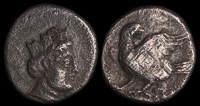
Alexandria Eschate 285-280 BCE
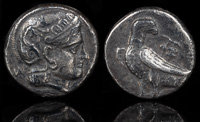
Andragoras 246-238 BCE
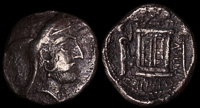
Bagadat of Persis 3rd century BCE
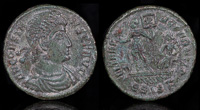
Constans 337-350 CE
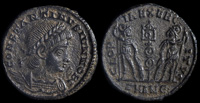
Constantine II 317-337 CE

Delmatius 335-336 CE
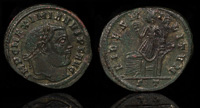
Galerius 305 CE
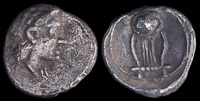
Kythnos, Cyclades 4th century BCE
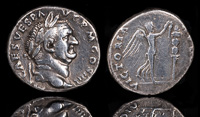
Vespasian 69-79 CE
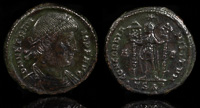
Vetranio 350 CE
